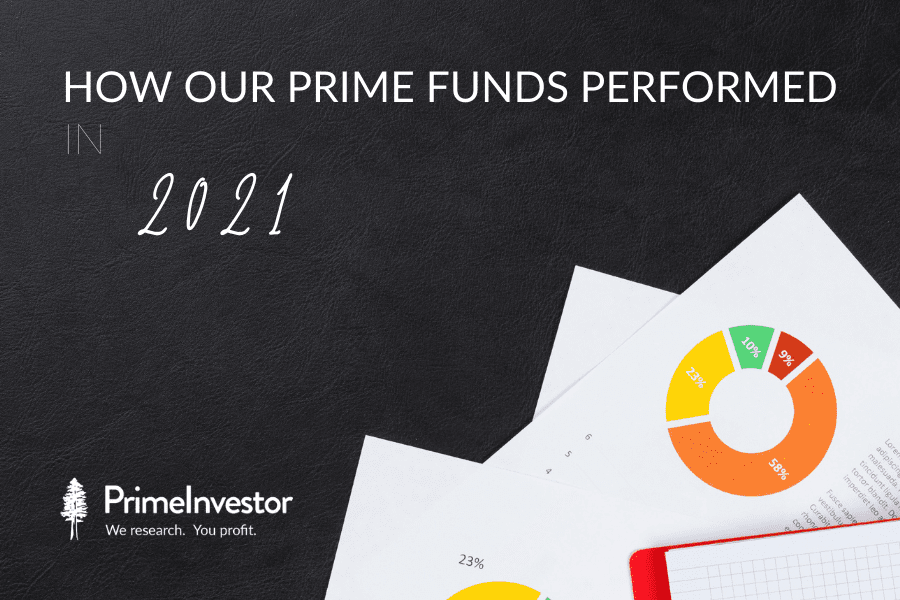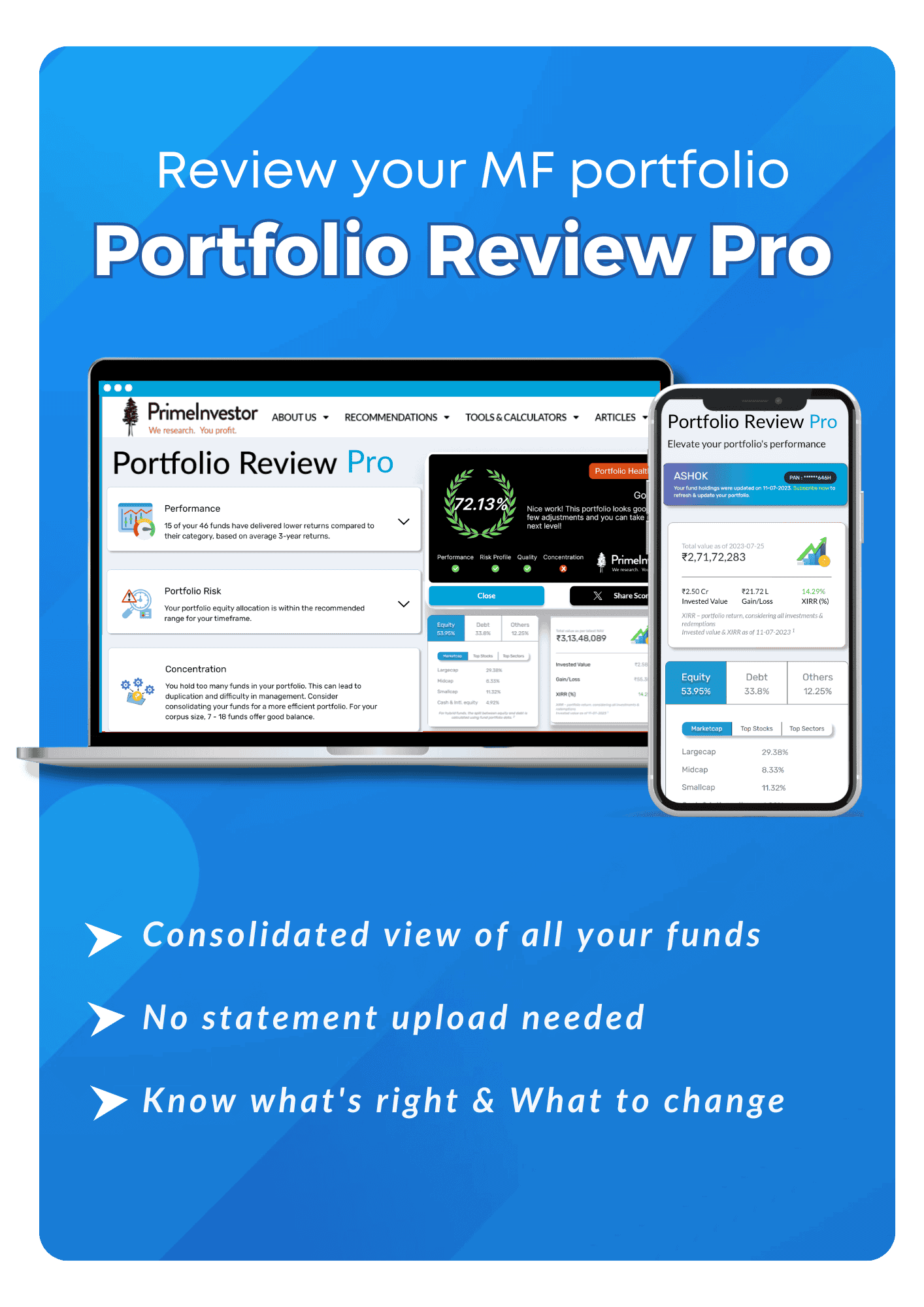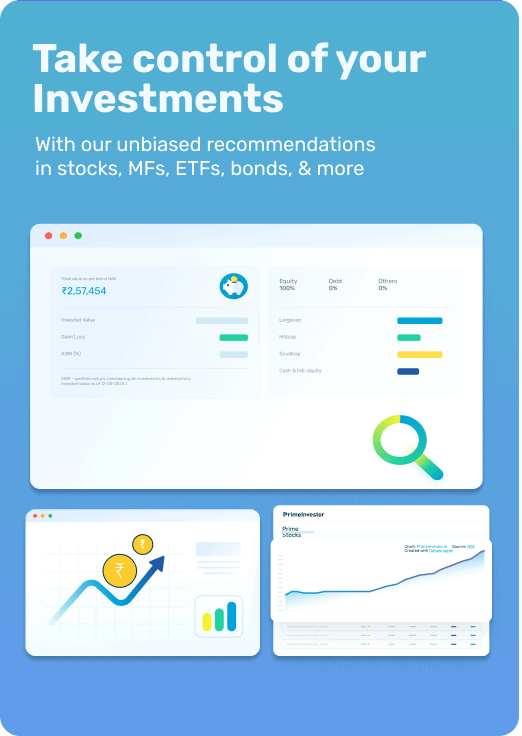Stock markets did not disappoint you in 2021. The various market cap segments delivered textbook-like bull market returns with small caps outperforming midcaps and midcaps outperforming large caps. The Nifty Small 250’s 57% return for the calendar year (ending December 22, 2021) was miles ahead of the Nifty 50’s 23%.
As you may have guessed, it also means that stocks that many fund managers did not like to hold were the ones that hogged the limelight. Funds that took a swing at such stocks soared above their peers.

In equity mutual funds, two peculiarities emerged:
- One, funds that were underperformers for years together bounced back to the top quartile in the 1-year chart and, in some cases, the return was big enough to pull even 3-returns to the top of the charts. Old timers like HDFC Flexicap that have steadily been in the bottom quartile on consistency metrics were among the chart toppers this year. Steady performers on the other hand, found themselves wanting in glamour on the returns front.
- Two, the divergence in performance of funds was stark. A long-term steady performing fund like SBI Small Cap returned 45.3% this calendar (point to point till Dec. 22), paling in comparison to the more daring ones like Quant Smallcap that showcased a whopping 86% return (point-to-point till Dec. 22).
This phenomenon is not new and is true of every bull market. As we often repeat, investment decisions made in these markets can go wrong if we rely excessively on near-term moves. Hence, we would caution you not to get too swayed by the churn in the performance chart.
As far as the debt market goes, there’s little to write about in terms of returns or trends. Across categories, returns turned and held at lower levels as the RBI kept rates on pause. Duration opportunities, which had held up returns in earlier years, also waned leaving investors with a prolonged stagnant interest rate period. The debt space did see the emergence of target-maturity passive funds that sparked interest – but the key, as always, lies in the yields.
NEED FOR REBALANCING
While you can wait for our equity outlook for 2022 in January, we would like to bring to your notice that the sharp rally in 2021 calls for a review and rebalancing of your MF portfolio. There is a high chance that many of your investments have breached your original asset allocation by a sizable percentage. For example, our High-Growth Portfolio was designed with 80% equity allocation.
This crossed the 85% mark since the portfolio’s launch in mid-January 2019. The swift rally since the March 2020 correction could have caused many of your portfolios to move far beyond your original allocation. Keep a thumb rule of the allocation exceeding 5% or more of your original allocation and rebalance your portfolio as soon as possible. You can use our asset rebalancing calculator to know how much to rebalance.
For this purpose, since equity is the asset class that has rallied, here are some guidelines. First, exit any long-term equity fund underperformers. Next, book profits in small cap and midcap funds. Deploy this in the debt funds that you hold in that same portfolio.
While we will be talking about this again when we do our portfolio reviews in January, we would urge you to do this exercise for all your asset-allocated portfolios.
Now we move to assessing how Prime Funds – our list of recommended funds – did across key fund buckets.
How we assessed performance
- We picked key buckets in our Prime Funds. These are Equity – Moderate, and Equity – Aggressive, Hybrid Equity – Moderate risk, Thematic/sector, Very Short-Term Debt, Short-term Debt, Medium-term and Long-term debt (these last two are clubbed). We did not choose passive funds for this exercise of seeing outperformance.
- Since we make changes to our list during our quarterly assessment, we have suitably incorporated those in our performance review. The returns were therefore taken for each quarter and the product of the returns taken for the year in reckoning. Returns are therefore not point-to-point for the calendar.
- For assessing equity fund performance, we compared with appropriate benchmarks. With debt funds, we took only the peer sets as debt indices are either not comparable or data is not available (they are paid indices).
- Please note that we have taken a portfolio approach to providing the returns as we cannot provide the returns for individual funds (for the full year) as some would have entered or exited our list. But we have mentioned the top performers and those that lagged.
Prime Funds performance – equity funds
Our initial explanation sets the context for our equity fund performance – and so, you will know that our Prime Equity Funds, chosen primarily on consistency in performance, were not a match to the other chart-toppers of 2021. But we did quite well against the indices. That we didn’t have chart toppers does not worry us and at present, we are not swayed by any of the mouth-watering returns funds served up in the 1-year charts.
Equity Moderate
Our Equity – Moderate category beat the Nifty 100 by a good 5 percentage points. Not surprisingly, funds like Parag Parikh Flexicap topped our list followed by Canara Robeco Flexicap (though the former had a significant lead over the latter). Funds such as Axis Bluechip or Kotak Flexicap that faltered during the early part of the year (when the rally was strong) are making a good comeback.
Overall, there aren’t funds in this category that we are worried about at present. The market weakness in the fourth quarter has reinforced our belief that a majority of our funds contain downsides better than the index. Having said this, we take note of the fact that our funds returned about the same as the category average (considering largecap, flexicap, contra and value funds). This has to do with the category average being bumped up by a few outlier funds like SBI Contra or BOI AXA Flexicap that bounced back from poor performance than by our recommended funds underperforming the category.
Equity - Aggressive
Our aggressive funds are not focused only on mid and small cap funds. They are across the large & mid, focused, mid and small cap categories, and even include a broad-based thematic fund. Our approach, even to this category, is to contain downside while looking at index-beating returns on the upside. This is in line with our overarching philosophy of building wealth by containing downside first and picking steady performers instead of the flashy funds.
As a mix, this Prime category is most comparable to the Nifty Large Midcap 250 index.
Our funds comfortably outpaced 2 of the 4 indices we have mentioned. Funds such as SBI Focused Equity bounced back from last year’s underperformance while others such as DSP Midcap are narrowing the gap of underperformance.
However, our mid-and-smallcap funds undershot their benchmarks for the year. But then, not many funds from the mid and small-cap categories outperformed their index in the first place. This is because the quality of stocks that rallied in the present market do not provide much scope for a fund manager to hold them in a fundamental-driven portfolio.
Considering the category average itself, if you combine the various categories that we classify as aggressive, the average was 47.6%. That’s 3.6 percentage points higher than our funds, even if they are also below the mid-and-small cap indices mentioned above.
However, as we mentioned earlier in this article, our relative underperformance to the category is hardly a surprise. Given the wild returns in funds such as PGIM Midcap Opportunities in the midcap space of BOI AXA Smallcap and Quant SmallCap in the small-cap segment, our own recommended funds’ returns will certainly look pale. We do think these performances will normalize. For those of you who hold such outlier funds, the present levels are a clear signal to book profits and prune exposure or even exit based on our MF review tool calls.
Equity – Sector/theme funds
Not many of you may have noticed that Prime Funds also carries select sector or theme calls. This year, we got several of those right (we don’t always😊). Commodities, IT and infrastructure themed funds delivered well (in the range of 57-73% annualized returns) outperforming the broad market index Nifty 500 anywhere between 20-36 percentage points.
We entered pharma and healthcare (after missing it in early 2020) when we thought it had corrected sufficiently to warrant an entry - but we see that it still remains less favoured. We are hopeful our entry point will work in your favour and think that the fund can be averaged on market falls.
Our call on MNC did not go well as the fund is not one for a bull market. Expecting a correction, we had brought it in but pulled it out in our September quarter review. We prefer our FMCG funds to act as the defensive theme. Our 2 banking funds remained the primary underperformers in this space and dragged overall returns.
Prime Funds performance - Hybrid equity moderate risk
In our recommendations for the Hybrid Equity Moderate Risk bucket, we have two aggressive hybrid funds and one balanced advantage fund that can have a higher unhedged equity exposure than peers (i.e., relatively more aggressive in the DAA/BA category).
For hybrid aggressive funds, we do consider performance against the Nifty 50 Hybrid Composite Debt 65:35 index. But because funds often go outside the Nifty 50 stocks and can have higher equity allocations, we primarily look at category averages. In balanced advantage funds, too, we find category comparison to be a better approach.
Our recommendations have been in line with the category average, as shown below:
The reasons for being in line with the category and not superior are both because of our approach in this category and due to quirks in the category average.
In our hybrid fund recommendations, our primary intention is to keep downside risks low as these funds are meant for conservative investors who want equity funds but are uncomfortable with swings in returns or steeper losses. In neither case do we want to recommend funds with very aggressive strategies.
Hybrid aggressive funds with significant mid and small-cap exposure will not find a place in our list. Therefore we lost out to funds that took significant mid-cap/small-cap exposure such as Baroda Hybrid Equity, BOI AXA Mid and Small Cap Equity & Debt, or IDFC Hybrid Equity or to funds with limited track record such as Quant Absolute. Funds such as these skew the average, due to the sheer extent of outperformance. Our recommended funds did better than at least half the category.
This apart, several funds that scored in 2021 were also very inconsistent performers both short-term and long-term. Take Kotak Equity Hybrid, for instance. This fund has done well in this calendar, but has been able to beat the index less than 20% of the time on a 3-year basis.
In the balanced advantage category, our recommended fund ICICI Pru Balanced Advantage has delivered better than most balanced advantage funds despite its conservative stance relative to peers such as Edelweiss or HDFC.
Our stance is also clear if you consider the final quarter of 2021 – a turbulent period for stock markets. Here, ICICI Pru Balanced Advantage ranks among the top in our category, while the more aggressive funds mentioned above have slid more as they were more open to equity market risks. We will continue to prioritize downside containment in this category.
Prime Funds performance - Debt funds
The debt fund space, overall, has been a sedate one for 2021. With the RBI holding off on raising rates to spur economic growth and keep government borrowing costs under control, higher yields from accrual funds stayed low. The will-it-wont-it back and forth over rates also kept out opportunities in duration, which had otherwise compensated for low accrual return earlier in 2019 and 2020.
That meant returns from both accrual and duration took a step back over 2021 – and the subsequent low return has disappointed most of you. We had outlined strategies you can follow in debt investments, even outside of debt funds, given this stagnant rate scenario, last month. While we will issue an outlook for debt funds and market next month, it’s worth noting that portfolio yields for funds have been slowly inching marginally up. Bond yields have begun rising, some banks have increased FD rates, while the US has indicated rate hikes in 2022. All this suggests that this prolonged period of low returns – a first for debt funds – may be drawing to a close.
Debt – very short term
Against the scenario of low yields, we’re comfortable with the performance of our recommended funds in the very short term category compared to peers.
Yes, the outperformance of our recommendations is not much. However, do note that in debt funds, generally, big out performances aren’t possible since interest rate differentials are limited. Any high return outperformance within a category would either come from credit risks or from duration. Given the stagnant rate scenario over 2021, etching out significant outperformance is harder.
Our recommendations in the Very Short-Term bucket are skewed towards money market funds (with commercial papers and certificates of deposits). That meant holding instruments with very low-risk with low yields. Other funds from the very short-term category could hold corporate bonds that were close to maturity and could earn marginally higher yields or take credit risks. Given this, the small outperformance that our recommended funds have delivered holds up well. Several funds that clocked performance significantly better than our recommendations, such as Aditya Birla SL Low Duration or HDFC Low Duration, tended to have at least some holding in lower-rated papers.
Should the rate cycle reverse higher, CPs and CDs will serve up better yields which can push returns back up. In any case, money market, ultra-short and low duration funds tend to go through phases based on yields and opportunities, as we explained in this article (see Trend #1).
Debt – Short term
Against the scenario of low yields, our recommendations have done well compared to peers.
Our recommended funds have beaten the category average by a small margin. Here too, we are comfortable with the calls we have taken and the returns they have delivered.
We took the call to step up recommendations in floating rate funds, which are positioned more favourably compared to other categories in an uncertain rate scenario. We added Nippon Floating Rate to join HDFC Floating Rate. These funds presented a mix of longer-maturities, shorter maturities, and measured credit risk. This paid off as floating rate funds delivered marginally better than other categories. However, do note that the floating rate category, while a good one to hedge interest rate calls, may not always be an outperformer.
Our recommended funds beat about two-thirds of the funds in the banking & PSU debt, short duration, and floating rate categories. They underperformed funds that dipped into credit risks, such as Aditya Birla SL Short Term, Baroda Short Term and so on, and did not match up on other metrics we consider as well. We opted for HDFC Short Term to allow better returns through controlled credit risk, and this has been among the best performers in the categories for 2021.
Our two banking & PSU funds – Axis and IDFC - have been the ones to undershoot, given the nature of the papers funds in this category invest in. A fund that we did not recommend, Edelweiss Banking & PSU, was a significant outperformer. It tends to actively manage duration to shore up returns; however, we prefer more stable maturities for this timeframe.
Debt – Medium & Long Term
In these two Prime Fund buckets – Medium Term and Long Term – we were a shade more active. For starters, in January, we removed Franklin India Corporate Bond from our recommended list. This apart, we took a cautious step towards introducing credit risk recommendations, as the time frame allowed for such risks, the spread of the lower-rated papers offered over AAA and gilt papers was attractive, and there were few options for superior long-term returns in the debt space. We continued to avoid funds or categories that took duration calls, apart from our gilt - constant maturity pick.
Our recommendations have fared well compared to peers.
Our corporate bond fund recommendations – ABSL, HDFC, ICICI, and Kotak – have all outdone their category average and we’re happy with our recommendations here. With returns of 4.2%-4.5% for 2021 (until December 15), it is a good margin over the 3.9% for the category.
Our credit risk addition midway through the year, in ICICI Pru Credit Risk, is holding up well. Taking some risk where the time frame allows, and a favorable market scenario will help improve returns. We have opted for a fund that has managed risks well.
On the other hand, SBI Constant Maturity has fared poorly in terms of absolute returns, though it has still delivered better than other constant maturity funds. The constant maturity category, in general, has done even worse than very short-term categories at just about 3% for this calendar. With no further rate cuts and stagnant rates, returns from duration tapered off. Returns will continue to languish even when the rate cycle turns up, as is the nature of this category. However, this remains a solid option for long-term portfolios, as the movements of rate upcycles and downcycles even off.
We are also seeing a marginal uptick in returns towards the end of the year for several debt fund categories. So, while returns currently look unsatisfactory, a rate up move, that is widely expected, can make 2022 a year of debt. We have also made one-off recommendations in target-maturity funds when the opportunity arose in terms of yields and we’ll continue to do so more actively in 2022.





14 thoughts on “Prime Funds performance in 2021”
Thanks for an honest assessment of the performance. Pl can you include the aspect of Fund manager performance f your chosen funds.
Great job Vidya Bala and Bhavana Acharya. Liked the transparency and the straight forwardness in the analysis that is not only looking at the past but with an eye on the future. Keep it up
PS – in the new MF selection tool, pl add columns of yearly and/or 3 year return..without that, the result is incomplete.
hello Sir, Thanks. If you mean point to point returns, they are available. thanks, Vidya
If I subscribe what returns should I expect for my investment either in Equity, Debt Fund, CAGR through MF SIP or through any other investments option. Can you please guide
We don’t give expected returns – one, it is not possible to predict returns, and returns change over time. Two, regulations bar us from providing this. In our recommendations, our aim is to offer returns that beat the market. You can understand more about returns and expectations in these articles:
https://www.primeinvestor.in/what-is-risk-premium-and-how-to-use-it/
https://www.primeinvestor.in/are-your-returns-expectations-right-heres-how-to-find-out/
Thanks, Bhavana
Looks great and can you shown the list of individual performance of funds which guided by prime like stocks return as on date,so it will be useful for us.
Unfortunately, like we mentioned in the article, given that some are removed and some added in between putting them in one list won’t be comaprable, we annualise them with sum product and the same may look confusing. hence refrained. Also, unlike stocks, there is no concept of reco date in MFs. We simply take the calendar year for some common comparison as funds remain a buy at any NAV as long as their are consistent. thanks. Vidya
Very hindsight and transparent article.
Will there be such review for ready to use portfolios? I am particularly interested in time based portfolio (> 7 years).
Yes, there will be. Please wait till early January as our review work is still on. thanks, Vidya
It would be great if we will have rolling returns (With graph) for ready to use portfolio if possible
Your suggestion is noted, but it’s a very tough thing to do given that the portfolio undergoes changes. This apart, our portfolios themselves are 2 years old now (we launched in Jan 2020), so showing returns prior to this period would not be right. – thanks, Bhavana
Thanks 👍
Awesome. Thanks!
Comments are closed.